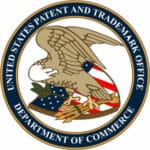Micro-Entity USPTO Discount
 Effective March 16, 2013, the United States Patent and Trademark Office (USPTO) has a brand new classification of inventors which provides a significant reduction in Patent Office fees. The new classification is called Micro-entity. The discount is a substantial 75% of what most corporations pay.
Effective March 16, 2013, the United States Patent and Trademark Office (USPTO) has a brand new classification of inventors which provides a significant reduction in Patent Office fees. The new classification is called Micro-entity. The discount is a substantial 75% of what most corporations pay.
The USPTO has always provided individuals and small businesses (500 or fewer employees) with a 50% discount on most Patent Office fees. Most of our clients have enjoyed the Small-entity discount.
In order to qualify for the Micro-entity discount, the USPTO has established 4 step criteria. You must qualify with all four in order to claim Micro-entity status and the accompanying 75% discount. Likewise, each Co-Inventor, Investor, any Assignees, as well as any Party with an Ownership Interest in the invention must qualify separately.
The four step criteria as established by the USPTO is:
1. SMALL-ENTITY REQUIREMENT
The applicant qualifies as a Small-entity. This means that you are an individual, a small group of inventors or a business with fewer than 500 employees.
2. APPLICATION FILING LIMIT
Neither the applicant, nor the inventor, nor a joint inventor has been named as the inventor or a joint inventor on more than four previously filed U.S. non-provisional patent applications and international applications under the Patent Cooperation Treaty (PCT) for which the basic national fee under 37 CFR 1.492(a) was not paid, and also excluding patent applications for which the applicant has assigned all ownership rights or is obligated to assign all ownership rights as a result of the applicant’s previous employment.
3. GROSS INCOME LIMIT ON APPLICANTS AND INVENTORS
Neither the applicant, nor the inventor, nor a joint inventor in the calendar year preceding the calendar year in which the applicable USPTO fee is being paid, had a gross income, as defined in section 61(a) of the Internal Revenue Code of 1986 (26 U.S.C. 61(a)), exceeding the “Maximum Qualifying Gross Income” reported on the USPTO website at: http://www.uspto.gov/patents/law/micro_entity.jsp which is equal to three (3) times the median household income for that preceding calendar year, as most recently reported by the Bureau of the Census. The amount is set at $150,162.00 for 2012 earnings.
4. GROSS INCOME LIMIT ON PARTIES WITH AN “OWNERSHIP INTEREST”
Neither the applicant, nor the inventor, nor a joint inventor has assigned, granted, or conveyed, nor is under an obligation by contract or law to assign, grant, or convey, a license or other ownership interest in the application concerned to an entity that, in the calendar year preceding the calendar year in which the applicable fee is being paid, had a gross income, as defined in section 61(a) of the Internal Revenue Code of 1986, exceeding the “Maximum Qualifying Gross Income” reported on the USPTO website at: http://www.uspto.gov/patents/law/micro_entity.jsp which is equal to three (3) times the median household income for that preceding calendar year, as most recently reported by the Bureau of the Census. The amount is set individually per party at $150,162.00 for 2012 earning.
The USPTO criteria may sound confusing, and as expected there are some special cases, but suffice it to say that: Most individual 








